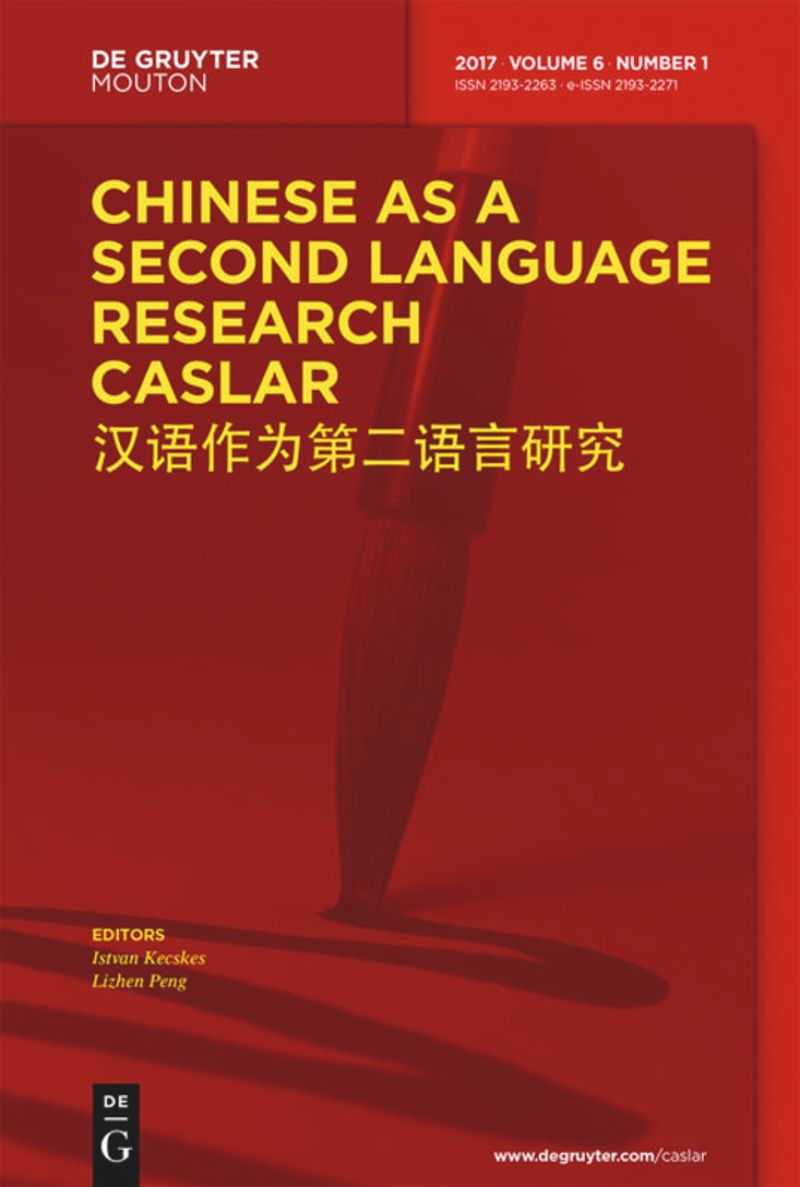CASLAR Journal 学会期刊
CASLAR (Chinese as a Second Language Research) is a bilingual, peer-reviewed journal that publishes papers both in Chinese and English. It is the first bilingual journal (Chinese – English) published by a Western publisher. The journal will publish 3 papers in Chinese and 3 papers in English in each issue starting with 2 issues in 2012. Each paper in the journal will have a summary in both Chinese and English. The goal of the journal is twofold: It will a provide a forum for scholars interested in Chinese as a Second Language Research, and it will function as a unique outlet that publishes cutting edge research with content and structure in a format that reflects the rapidly growing interest in Chinese as a Second Language (CSL) accessible to researchers both in Chinese speaking countries and areas as well as the Western world. The journal focuses on research on the acquisition, development and use of CSL. It supports interaction and scholarly debate between researchers representing different subfields of linguistics with a focus on CSL.
The journal intends to be a forum for researchers who are looking for new tools and methods to investigate and better understand CSL. We are especially interested in publishing articles and research papers that – address major issues of second language acquisition from the perspective of CSL, – explore the implications of CSL research for theoretical developments and practical applications, – focus on the acquisition and use of varieties of CSL, – study the nature of interaction between native speakers and non-native speakers of Chinese, – investigate how empirical findings of CSL can advance and develop better Chinese language teaching methodologies, – analyze the ways in which language is both shaped by culture and is the medium through which culture is created.
Please send inquiries and submissions in English to Prof. Dr. Istvan Kecskes: icup@uamail.albany.edu
Please send inquiries and submissions in Chinese to Prof. Dr. Lizhen Peng: plizhen@zju.edu.cn
Editor-in-Chief: Istvan Kecskes, State University of New York, Albany, USA
Co-Editor: Lizhen Peng, Zhejiang University, Hangzhou, China Assistant
Editor: Ned Danison, State University of New York, Albany, USA
CASLAR – 汉语作为第二语言研究
主编:Istvan Kecskes
共同主编:彭利贞
CASLAR是一份发表以汉语和英语写作的学术论文的双语、同行专家评议期刊,是第一份由西方出版商发行的双语(汉语-英语)期刊。本刊为季刊,每期发表以汉语、英语写作的论文各3篇,2012年拟先出2期,每篇论文都有汉语和英语的摘要。
本刊的目标主要为两方面:一方面,它将为专注于汉语作为第二语言研究的学者提供一个论坛;另一方面,作为一下独特的窗口,它也将发表内容、结构上最新的研究成果,以反映汉语国家、地区及西方世界的学者对于汉语作为第二语言研究的高速增长的兴趣,从而增进人们对汉语作为第二语言的理解。本刊关注汉语作为第二语言的习得、发展和使用等方面的研究;支持致力于汉语作为第二语言研究、代表不同语言学领域的学者之间的切磋互动和学术争鸣;因此,本刊必将成为那些正寻求新的研究工具和方法、以深化对汉语作为第二语言之认识的学者们的论坛。
我们尤其欢迎如下论题的学术论文:
1) 从汉语作为第二语言角度对第二语言习得的主要问题进行的研究
2) 关于汉语作为第二语言研究对于理论发展和实际应用之意义的探讨;
3) 专注于汉语作为第二语言的各个方面的习得和使用的研究;
4) 关于汉语母语者和非母语者之间互动之性质的研究;
5) 关于汉语作为第二语言的实验结果如何促进汉语教学方法得到更好发展的研究;
6) 关于语言如何受文化的影响而语言又是如何作为文化创造之媒介的研究。
英文咨询和投稿,请寄Istvan Kecskes教授、博士,icup@uamail.albany.edu
中文咨询和投稿,请寄彭利贞教授、博士,plizhen@zju.edu.cn
CASLAR Journal
For more information, please refer to the website of the journal:

